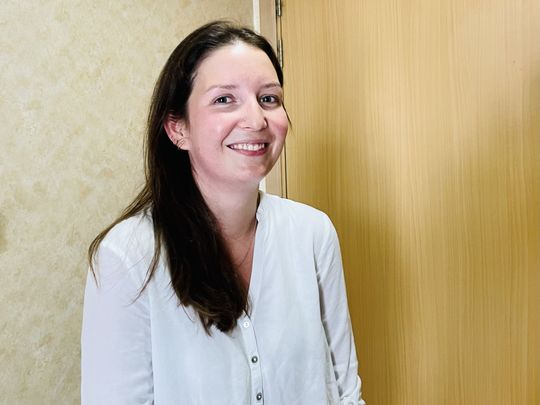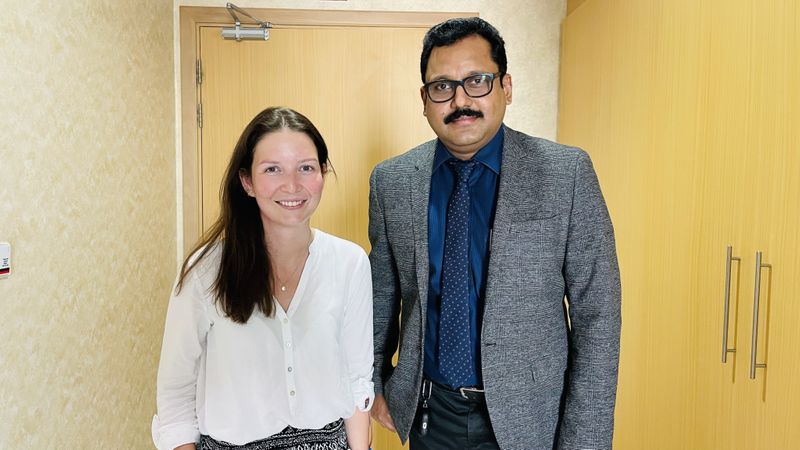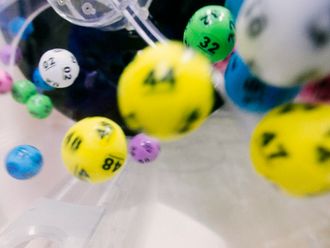
Dubai: A 26-year-old German nurse, who was rushed to a Dubai hospital with stroke-like symptoms while sailing off the Dubai coast, was provided accurate diagnosis and treatment and was able to fly back home in good health.
On October 24, Sophie Marie Troester, part of the crew of a ship sailing from Greece was off the Dubai coast when she fainted following a severe migraine. She manifested symptoms like stroke and experienced paralysis on the right side of her body.
Troester, who suffered from severe migraine from her younger days, had no clue how rare her migraine type was. Only the severe attack, which felt like she was undergoing a stroke, while on the cruise triggered her emergency treatment at the Medeor Hospital, Dubai where a neurologist was able to diagnose her rare condition and provide accurate treatment.

‘My vision blurred’
Recalling her ordeal, Troester said, “I was reading a book lying on the bed in my cabin when my vision blurred.”
Troester understood a migraine was kicking in, as she had experienced a similar attack five years ago while in Germany. “That was in 2016. I went to a hospital, but the doctors could not diagnose my condition. They said I have a migraine with aura. Later, I used to get minor headaches, which lasted for a day or two. But one of this intensity happened only now,” she added.
Troester said she tried to pick up her phone and ring a friend. “However, my muscles had become weak. I could not hold the phone in my hand, and it kept falling. I had to try hard, and somehow, I managed to make the call. But all I could utter was a single word – hospital.”
The medical team on the cruise ship tried to help her but her symptoms worsened and the right side of her body was paralysed, while she was unable to speak.
Rare condition
At Medeor Hospital, where Troester was brought in to the emergency, Dr Anas Abdul Majeed, a consultant neurologist, attended on her. Running some diagnostic tests, Dr Majeed was able to pinpoint that Troeste suffered from a rare hemiplegic migraine.
Dr Majeed explained: “While migraine occurs in 12 per cent of the population, hemiplegic migraine occurs in 0.01 per cent of the population only. The hallmark of hemiplegic migraine is one-sided weakness, accompanied by a migraine attack. It begins with a visual symptom, followed successively by abnormal sensation, muscle weaknesses and difficulty in speaking. Each symptom evolves over 20 to 30 minutes and may take hours to subside.”
Treatable condition
Dr Majeed assured that although severe, once diagnosed, the patient could be provided relief. “Hemiplegic migraine is a rare but treatable condition. The condition usually occurs in families, but Sophie has no family history. Hemiplegic migraine induces stroke-like symptoms where the patient experiences paralysis on one side of the body combined with throbbing headache.
However, in case of such a type of migraine, proper diagnosis is crucial and challenging as it is purely a clinical process unaided by imaging and other tests. There have been several instances where hemiplegic migraine was treated as stroke, pointed out Dr Majeed. “Sophie had the sequential pattern, which helped in the diagnosis,” said Dr Majeed, who provided specific pain management treatment to relieve her of the condtion.
He added that prophylactic medicine could prevent the occurrence of the migraine.
According to Troester, the effect of the migraine lasts for a few days. “It hits me with tremendous pain. It feels like somebody is ripping my head apart. This excruciating pain continues for a few minutes, followed by weaknesses in the muscle. Though I get better in one hour, the effect stays with me for some more time – maybe a day or two. Then everything is fine and feels like normal,” she explained.
Hope for normal life
Dr Majeed’s treatment helped Troester recover well.The doctor says she would have no problem leading a normal life. “Such migraines if they occur too frequently can have a debilitating impact on an individual. Sophie will be have to take the medication I have prescribed for three to six months, after which the frequency of this headache will subside. Maybe her attack frequency might be reduced to once in ten years. She will be able to lead a normal life.”








